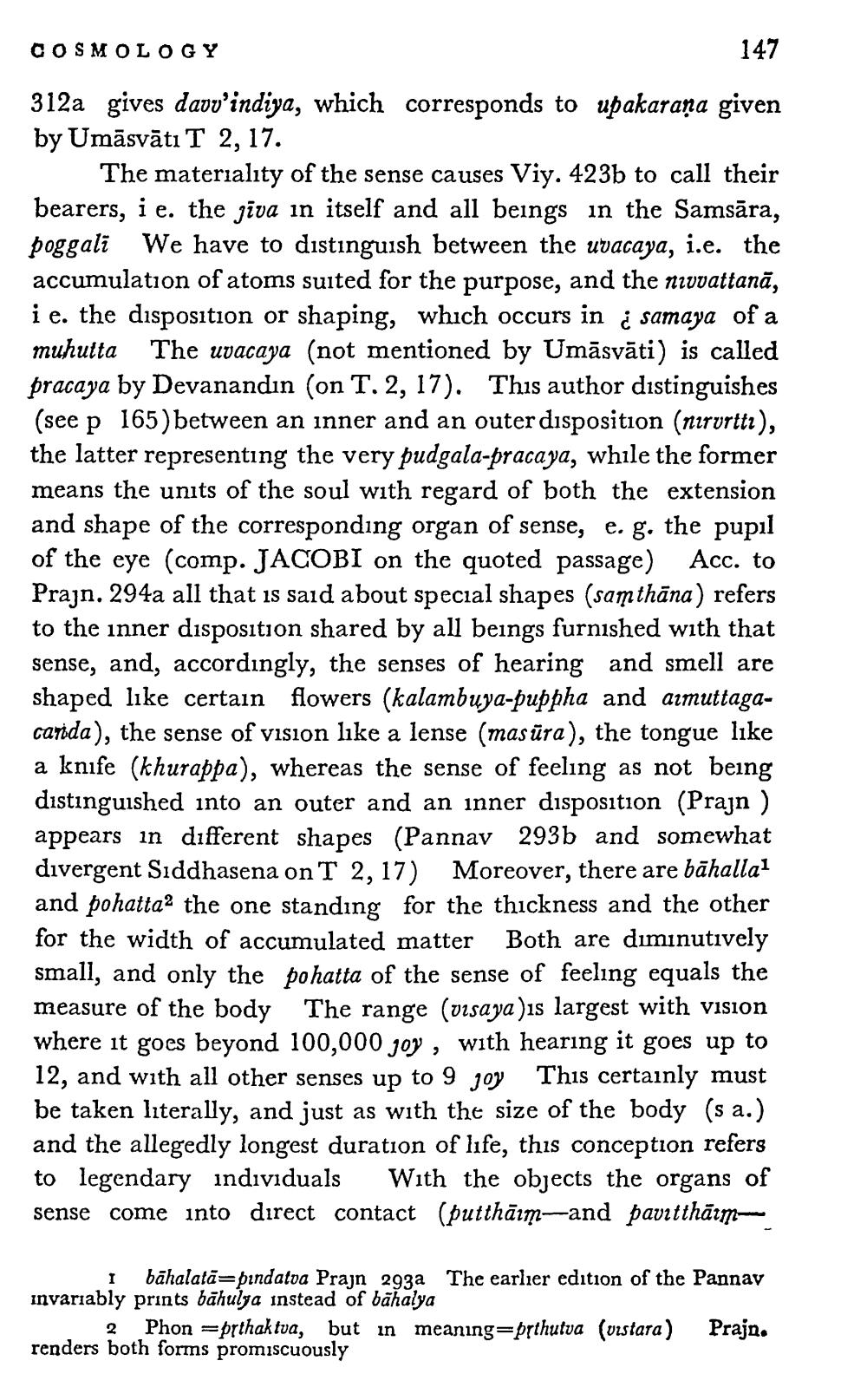________________
COSMOLOGY
147
312a gives davv'indiya, which corresponds to upakarana given by Umāsvātı T 2,17.
The materiality of the sense causes Viy. 423b to call their bearers, i e. the jiva in itself and all beings in the Samsāra, poggalī We have to distinguish between the uvacaya, i.e. the accumulation of atoms suited for the purpose, and the nivvattanā, i e. the disposition or shaping, which occurs in i samaya of a muhutta The uvacaya (not mentioned by Umāsvāti) is called pracaya by Devanandın (on T. 2, 17). This author distinguishes (see p165) between an inner and an outer disposition (niruritz), the latter representing the very pudgala-pracaya, while the former means the units of the soul with regard of both the extension and shape of the corresponding organ of sense, e.g. the pupil of the eye (comp. JACOBI on the quoted passage) Acc. to Prajn. 294a all that is said about special shapes (samthāna) refers to the inner disposition shared by all beings furnished with that sense, and, accordingly, the senses of hearing and smell are shaped like certain flowers (kalambuya-puppha and aimuttagacarida), the sense of vision like a lense (masüra), the tongue like a knife (khurappa), whereas the sense of feeling as not being distinguished into an outer and an inner disposition (Prajn ) appears in different shapes (Pannav 293b and somewhat divergent Siddhasena on T 2, 17) Moreover, there are bāhalla? and pohatta2 the one standing for the thickness and the other for the width of accumulated matter Both are diminutively small, and only the pohatta of the sense of feeling equals the measure of the body The range (visaya )is largest with vision where it goes beyond 100,000 joy, with hearing it goes up to 12, and with all other senses up to 9 joy This certainly must be taken literally, and just as with the size of the body (s a.) and the allegedly longest duration of life, this conception refers to legendary individuals With the objects the organs of sense come into direct contact (putthāım—and pavitthāim
1 bāhalatā=pindatva Prajn 293a The earlier edition of the Pannav invariably prints bāhulya instead of bāhalya
2 Phon =prthaktva, but in meaning=þrthutva (vrstara) Prajn. renders both forms promiscuously




